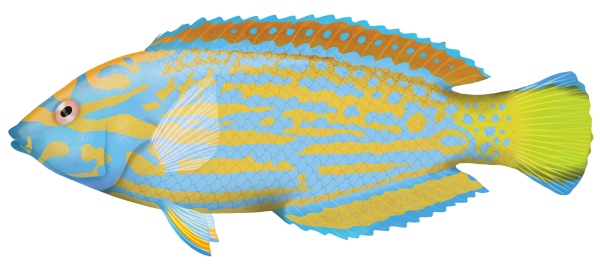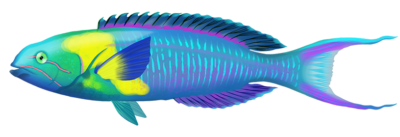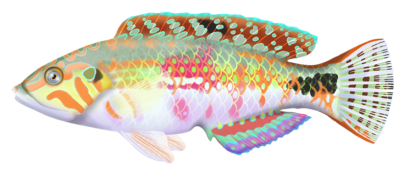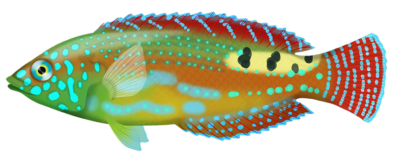Quick Facts
Distribution
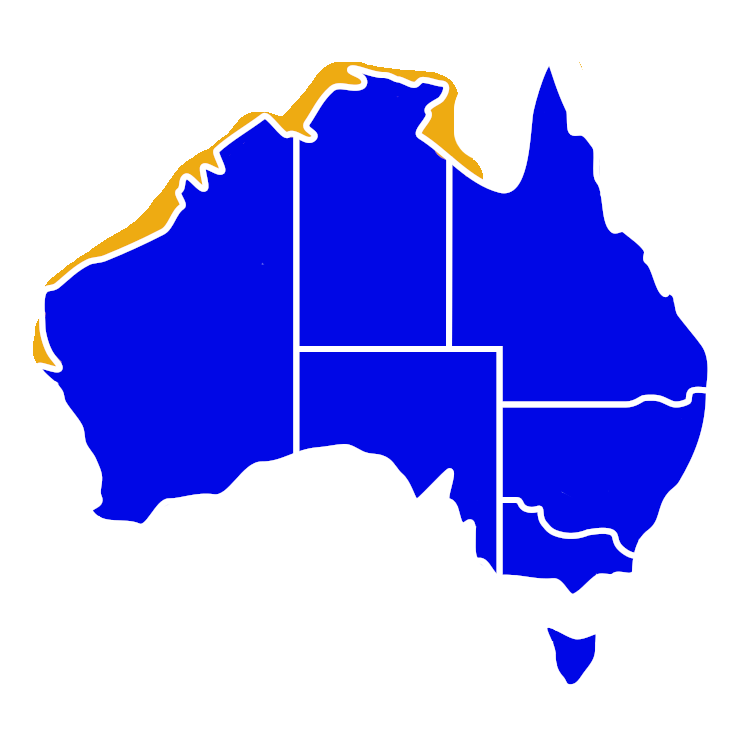
Interesting Info
- The Blue and Yellow Wrasse is a colourful species of wrasse found in the coastal waters of Western Australia, the Northern Territory and Queensland, particularly on the Ningaloo and Great Barrier Reefs.
- They are renowned for their vibrant and striking coloration. Adult males display a vibrant blue colour on their head and upper body, transitioning to a bright yellow towards the tail. Females and juveniles, on the other hand, exhibit a more subdued coloration, with a pale blue-green hue and yellowish undertones.
- Blue and Yellow Wrasse are carnivorous fish, their diet consists of small invertebrates, including crustaceans, molluscs, and small fish. They use their specialised teeth and jaws to feed on prey items found within the coral reef ecosystem.
- During the night, Blue and Yellow Wrasse seek shelter within crevices or coral heads, where they rest and remain hidden from potential nocturnal predators.
- Breeding season for this species generally occurs during the warmer months, from spring to early summer, which aligns with the reproductive patterns of other wrasse species.
- During the breeding season, male Blue and Yellow Wrasse undergo remarkable colour changes. Their heads and upper bodies transition to a vibrant blue, while the lower body and tail turn bright yellow.
- They are a sequential hermaphrodite, meaning it changes sex during its lifetime. It starts as a female and can transition to become a male if the dominant male in its social group dies or disappears.
- They are a long lived wrasse with an estimated lifespan up to 10 years.
Species Interaction
Recreational Fishing, Aquarium, Snorkeling & Diving
Blue and Yellow Wrasse are not targeted for recreational fishing, they may be incidentally caught by anglers targeting other species. They are often a catch and release species in Australia. As an aquarium fish, they are highly prized for their stunning coloration and active swimming behaviour. Their incredible colours and active swimming also makes them a popular fish to seek out for snorkelers and divers.
Scientific Classification
Kingdom: Animalia
Phylum: Chordata
Class: Actinopterygii
Order: Perciformes
Family: Labridae
Genus: Anampses
Species: Anampses Lennardi
Conservation Status
The Blue and Yellow Wrasse’s conservation status in Australia is not listed as a threatened or endangered as a species. However, it is important to note that the overall health and resilience of their coral reef habitats are critical for their long-term survival.
Fish Taste Quality
Blue and Yellow Wrasse are a edible fish, however it is not widely consumed in Australia. It is often described as being similar to other reef fish species.
Taste Rating: 2/5
How to catch
Blue and Yellow Wrasse
Catch Difficulty: Easy
Tackle: Running Sinker Rig
Bait: Crab, Fresh cut flesh baits, Lures, Pilchards, Prawns, Shellfish, Squid, Worms
Technique: Keep bait close to the reef/structure
Popularity: Not targeted - Bycatch
Blue and Yellow Wrasse
As Aquarium Fish
Care Level: Moderate
Temperament: Semi-Aggressive
Diet: Carnivore
Reef Compatible: Yes
Minimum Tank Size: 100 gallons
Recreational Viewing
- Snorkeling & Scuba
Finding: Intermediate
Temperament: Curious
Location: Inner Reef, Outer Reef, Lagoon
Danger: None


